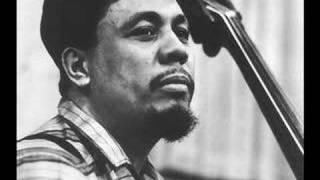Charles Mingus, an iconic figure in jazz, is celebrated for his dynamic compositions and virtuosic bass playing. His work blends various jazz styles with a unique and powerful voice, making him one of the most influential jazz musicians of the 20th century. Here is a look at ten of his best songs that capture his genius and innovation.
1. Goodbye Pork Pie Hat (1959)
“Goodbye Pork Pie Hat” is one of Mingus’s most beloved compositions, a poignant elegy for saxophonist Lester Young. Featured on the album “Mingus Ah Um”, the piece combines a soulful, bluesy feel with a haunting melody. It showcases Mingus’s ability to convey deep emotion through music, blending complex harmonies with a deeply personal touch.
2. Haitian Fight Song (1957)
Originally released on “The Clown”, “Haitian Fight Song” is a powerful expression of Mingus’s emotions about racism and struggle. The song begins with a solo bass introduction, leading into a driving, intense theme that evolves through a series of dynamic changes. It exemplifies Mingus’s talent for creating pieces that are both musically intricate and socially poignant.
3. Moanin’ (1959)
“Moanin’” appears on “Blues & Roots” and is renowned for its deep groove and gospel-infused themes. With a memorable baritone saxophone riff, the song builds on call-and-response patterns and collective improvisation, reflecting Mingus’s desire to blend the spiritual and the secular in his music. It remains a staple in the hard bop repertoire.
4. Better Git It in Your Soul (1959)
Opening “Mingus Ah Um”, “Better Git It in Your Soul” is a high-energy piece inspired by gospel and blues. Its infectious rhythm, shouting background vocals, and rapid tempo capture the exuberance and spiritual fervor of a church revival. This track is a testament to Mingus’s ability to blend different musical traditions into a cohesive and exciting composition.
5. Fables of Faubus (1959)
A politically charged piece, “Fables of Faubus” was initially released on “Mingus Ah Um” without lyrics due to its controversial nature. It criticizes Arkansas Governor Orval Faubus’s resistance to desegregation. The piece is characterized by its satirical tone and dissonant harmonies, reflecting Mingus’s boldness in addressing social issues through his music.
6. Pithecanthropus Erectus (1956)
The title track from the album “Pithecanthropus Erectus” represents a significant departure from traditional jazz forms. The composition describes the evolution and eventual downfall of humanity, with a structure that shifts from organized themes to free-form improvisation. It highlights Mingus’s innovative approach to narrative in jazz.
7. Reincarnation of a Lovebird (1957)
Appearing on “The Clown”, “Reincarnation of a Lovebird” is a tribute to Charlie Parker. The piece combines bebop elements with Mingus’s signature complexity and emotional depth. Its shifting time signatures and lush harmonies pay homage to Parker’s influence while showcasing Mingus’s own compositional voice.
8. Orange Was the Color of Her Dress, Then Blue Silk (1964)
From the album “Mingus Plays Piano”, this track offers a more introspective look at Mingus’s style, focusing on his piano playing rather than his bass work. The piece’s title and shifting moods reflect a personal narrative, combining melancholy and beauty through intricate melodies and harmonies.
9. Meditations on Integration (1964)
A live performance highlight, “Meditations on Integration” is a sprawling, emotionally charged piece featured on “The Great Concert of Charles Mingus”. It explores themes of social integration and civil rights, blending intense, free-form passages with more structured sections. The composition’s depth and complexity reflect Mingus’s engagement with contemporary issues.
10. Goodbye (1969)
Featured on the album “Let My Children Hear Music”, “Goodbye” is a beautifully orchestrated piece that combines elements of classical music with jazz. The lush arrangement and expressive melody demonstrate Mingus’s ability to transcend genre boundaries, creating a work that is both intricate and profoundly moving.
Conclusion
Charles Mingus’s top songs illustrate his remarkable ability to blend diverse influences into a cohesive and powerful musical vision. His compositions range from deeply personal tributes to bold political statements, showcasing his brilliance as both a composer and performer. Through these pieces, Mingus’s legacy continues to inspire and influence musicians and listeners alike, cementing his place as a true giant of jazz.


No responses yet